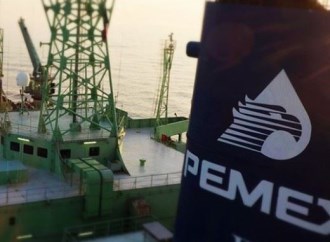
Mexico’s 2025 Energy Reforms: A Closer Look
What the new electricity and hydrocarbon reforms entail.
BY CARLOS LOBO AND
IVAN SERRALDE LOYZAGA
On March 19, 2025, the President of Mexico, Claudia Sheinbaum, issued two major decrees in the Official Gazette of the Federation that introduce significant changes to the country’s energy landscape. These reforms, one concerning the electricity sector (the “Electricity Sector Reform”) and the other addressing the hydrocarbon sector (the “Hydrocarbon Sector Reform”), are designed to reshape Mexico’s energy policy by redefining the roles of both the state and private sectors. While each reform has its specific focus, both aim to bolster state control over key activities while allowing for private sector participation under specific terms.
A. ELECTRICITY SECTOR REFORM
The Electricity Sector Reform introduced a new regulatory framework that replaced the former Electricity Industry Law published on 2014 with the new Electricity Sector Law. In addition, the Law of the State Public Enterprise Comisión Federal de Electricidad (“CFE”) and the Law of the National Energy Commission to create the National Energy Commission (“CNE”) were enacted.
1. Brief introductory description to the sector
In Mexico, the value chain of the electricity sector consists of four main activities that together conform what is known as the National Electric System (the “Grid”).
– Generation, which refers to power plants that produce electricity using various technologies (hydroelectric, thermoelectric, wind, etc.). Both private and state-owned companies (i.e. CFE) can participate in this activity.
– Transmission, which involves the National Transmission Network, which is made up of high-voltage lines that carry electricity from power plants to cities.
– Distribution, which refers to the General Distribution Networks that deliver electricity directly to end users. Both transmission and distribution are exclusively reserved for the Mexican state, as they are considered strategic activities.
– Commercialization, which refers to the purchase and sale of electricity and related services within the Wholesale Electricity Market (the “Market”), operated by the National Energy Control Center (“CENACE”, per its acronym in Spanish).
2. Key Objectives of the Reform
The goal of the Electricity Sector Reform is to solidify the States participation in the electricity sector. Pursuant to the Electricity Sector Reform, the CFE, which is the state-owned company active in the sector, will secure leadership in electricity generation and distribution, mandating that CFE maintain at least 54% of the energy injected into the Grid each year.
Although, as under the previous framework, private entities remain involved in generation and commercialization, the Electricity Sector Reform places strict regulations on their participation, ensuring that the state retains a dominant role in the sector.
3. Institutional Changes
The reform creates the National Energy Commission (“CNE”, per its acronym in Spanish) as a decentralized body under the Ministry of Energy (“SENER”, per its acronym in Spanish). CNE will be in charge of granting permits and issuing regulations for the electric sector, while SENER will have the authority to issue permits for the export and import of energy.
SENER is being granted the ability to issue binding planning instruments for the electric sector, such as the Electric Sector Development Plan, which must guarantee the “non-prevalence” of private individuals over the State in the public electricity service, meaning that the State will have a preferential position over private entities in electric generation and commercialization activities as described below.
CFE is being redefined from a “Productive State Enterprise” into a “State Owned Enterprise” with social mission which implies more flexibility to operate under a unique framework for acquisitions, leases, assets, budgeting and accounting, debt management, and sustainability.
4. Private entities’ participation and regulation changes
As under the previous regime, private entities are still allowed to participate in generation and commercialization activities.
Power generation by private entities can be carried out under various schemes based on the capacity of the system:
(i) Distributed Generation: This scheme refers to electricity generation by power plants with a capacity of less than 0.7 MW, which may operate without requiring a generation permit from the CNE. The change introduced to this scheme by the Electricity Sector Reform consist of increasing the threshold of maximum capacity allowed for this modality from 0.5 MW, considered under the former regime, to 0.7 MW.
(ii) Large-scale generation: This scheme involves the production of electricity and associated products by power plants with a capacity of 0.7 MW or greater and comprises two modalities:
a) Self-consumption: Production intended to meet the generator’s own consumption needs. The Electricity Sector Reform introduced this new figure to replace the “isolated supply” scheme existing under the former law. Power plants operating under this new self-consumption regime can be of two types depending on whether or not they are interconnected to the Grid.
i. Isolated self-consumption: Electricity production without a Grid connection.
ii. Interconnected self-consumption: If interconnected to the Grid, surpluses can be injected into the Grid for free or sold. As opposed to the former “isolated supply” scheme, private entities under this new regime cannot freely sell their surplus to third parties, but exclusively to CFE and according to compensation methodologies defined by the CNE. Additionally, interconnected plants with an installed capacity between 0.7 MW and 20 MW will have a simplified procedure for obtaining a power generation permit from the CNE.
b) Generation for sale to the Market: Production of electricity and associated products intended for commercialization in the Market. In line with current legislation, private entities with the necessary permit from the CNE are allowed to generate and sell electricity without any restrictions on capacity. This modality of large-scale generation did not have relevant changes as a result of the Electricity Sector Reform.
Regardless of installed capacity, the Electricity Sector Reform foresees as a modality for private participation, the schemes of “mixed development” which refer to partnerships between the State and the private sector, namely:
a) Long-term production: Through this scheme, all power generated will be exclusively acquired by CFE under a long-term contract, CFE will not contribute capital for the project’s development and will have a preferential right to acquire the asset at no cost at the end of the contract. Some implications of this model include the recovery of the initial investment, as well as the design of guarantee structures and payment mechanisms to prevent the CFE’s default.
b) Mixed investment: Through this scheme, CFE must have a direct or indirect participation in the project of at least 54% and will have a preferential right to acquire the plant’s production, while enabling the plants to also commercialize their capacity to third parties. Some implications of this structures may include: (i) the need to adjust corporate governance structures (voting mechanisms, decision rights, etc.) to align with CFE’s majority stake; and (ii) the need to define entry and exit terms for private parties (tag along and drag along clauses).
B. HYDROCARBON SECTOR REFORM
The Hydrocarbon Sector Reform introduced a new regulatory framework that replaced the former Hydrocarbon Law published on 2014 with the new Hydrocarbon Sector Law. In addition, the Law of the State Public Enterprise Petróleos Mexicano (“PEMEX”), were enacted.
The Hydrocarbon Sector Reform introduces significant changes in exploration, extraction, transportation, storage, and distribution activities.
1. Brief introductory description to the sector
In Mexico, the value chain of the hydrocarbon sector consists of upstream, midstream, and downstream activities:
– Upstream, which refers to exploration and extraction activities, including searching for and evaluating reserves and extracting oil and natural gas from the ground.
– Midstream, which includes transportation and storage, refers to the transfer of crude oil and natural gas through pipelines, ships, and trucks, as well as their storage in tanks and underground reservoirs. This stage is critical for moving resources to refineries or distribution points.
– Downstream, which includes refining, commercialization and distribution, consist of the processing of crude oil into products such as gasoline, diesel, liquefied petroleum gas, and other fuels. These products are then distributed and sold to end users, including industries and retail outlets.
2. Key Objectives of the Reform
The goal of the Hydrocarbon Sector Reform is to strengthen PEMEX’s position in exploration and extraction, while allowing for private sector participation in various stages of the value chain.
The reform introduces new collaboration models, particularly in exploration and extraction, by creating mixed development projects with private entities.
3. Institutional Changes
The CNE will replace the former Energy Regulatory Commission (the “CRE”). As such, CNE will be in charge of granting permits and issuing regulations for the hydrocarbon sector. This change aims to centralize regulation under one authority with broad powers in both the electricity and hydrocarbon sectors.
PEMEX is also being redefined from a “Productive State Enterprise” into a “State Owned Enterprise” with social mission which implies more flexibility to operate under a unique framework for acquisitions, leases, assets, budgeting and accounting, debt management, and sustainability.
4. Private entities’ participation and regulation changes
Main changes of the Hydrocarbon Sector Reform pertain to the exploration and extraction activities. Traditionally, the regulatory model allowed private participation through production-sharing, profit-sharing, and license contracts, while PEMEX received direct assignments for these activities. As per the Hydrocarbon Sector Reform, the exploration and extraction activities will primarily, yet not exclusively, be carried out by PEMEX through assignments granted by SENER and private parties will still have the ability to enter into contracts. The main changes consist of the following:
(i) PEMEX will have preferential treatment in the granting of new assignments.
(ii) There will be two types of modalities for these assignments, one of which allows private capital participation alongside PEMEX:
a) Assignment for Self-Development: PEMEX alone will carry out the activities using its own resources and capabilities.
b) Assignment for Mixed Development: This modality allows PEMEX to receive support from third parties. To do so, PEMEX may enter into “Mixed Agreements” with private companies, provided that PEMEX’s interest shall not be less than 40%. This scheme resents the option for private entities of accessing a state-backed partner which may reduce risks, however, it also limits the autonomy of private entities for project development.
(iii) Both private companies and PEMEX will still be able to enter into exploration and extraction contracts with SENER through competitive bidding processes, but will be limited to exceptional cases.
To sum up, under this new framework private sector participation seem to depend more on partnerships with PEMEX and limits the autonomy of private entities for project development.
Regarding activities such as transportation, storage, commercialization, distribution, and other related activities, permits will no longer be granted by the former body, CRE, but rather by the CNE and SENER. However, a special permit is foreseen in the Hydrocarbon Sector Reform for the activity of “formulation,” which will involve blending petroleum products with additives and biofuels to obtain products that meet certain quality standards.
5. Tax Regime
A new tax regime called the “Petroleum Law for Wellbeing” is being implemented for holders of exploration and extraction assignments. Under this regime, the tax rates for hydrocarbon production will be 30% for oil and 11.63% for non-associated gas, applied to the value of the product. The tax aim to capture a bigger share of the economic rent from natural resources exploitation, which may represent a cost and profitability challenge to operators.
C. Conclusions
The 2025 energy reforms mark a major shift in both the electricity and hydrocarbon sectors in Mexico. The key take aways from the reforms consist of (i) institutional concentration through the creation of CNE with ability to act in both the hydrocarbon and electricity sectors, the new powers granted to SENER and the redefinition of PEMEX and CFE as “State Owned Enterprises”; (ii) the strengthening of PEMEX, with preferential treatment in the exploration and extraction activities; and CFE, with a mandate of maintain a minimum 54% share of the power injected to the Grid; and (iii) the introduction of mixed-investment models that entail a collaboration landscape for private entities and the Government (for each case, PEMEX and CFE).
Both reforms emphasize state control in strategic areas while introducing structured collaboration models with private entities. They appear to create a strictly regulated environment that allows private investment while ensuring the government retains control over key sectors of Mexico’s energy industry. This changes will have important implications to the foreign and local private entities that are interested in participating in these sectors and having specialized legal counsel will be essential to navigate this evolving regulatory landscape.
Carlos Lobo is a member of Arnold & Porter’s Corporate & Finance group and Latin America practice. Ivan Serralde Loyzaga is a Foreign Attorney with Arnold & Porter in New York.












